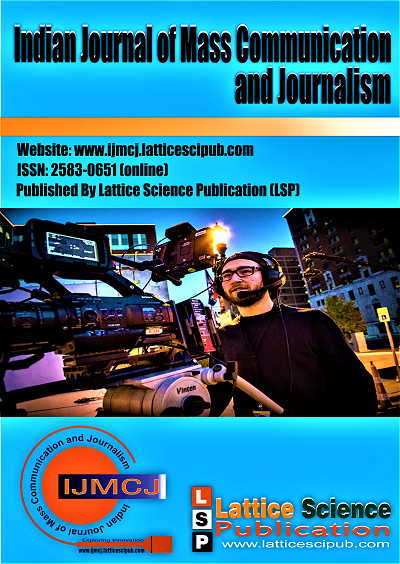Sexual Harassment at the Workplace: Barrier Within the Course of Progression of Women Employees
Main Article Content
Abstract
The main objective of this research paper is to acquire an efficient understanding of the criminal and violent act of sexual harassment at the workplace. The female employees are the ones, who are subjected to this criminal and violent act. This is unfavourable on their physical and psychological health and well-being. One of the major disadvantages is, concentration abilities of the victims get impeded. Furthermore, there is a decline in motivation levels. The male employees are the doers of this act. The victims get compelled to leave their jobs. In all types of organizations, there have been formulation of laws and rules, which are enabling the individuals to alleviate this criminal and violent. Furthermore, all the members of the organizations, irrespective of their job positions in the hierarchy need to ensure, communication processes need to take place in an effective manner. Furthermore, they need to treat each other with respect and courtesy. As a consequence, one will render an important contribution in forming cordial and amiable terms and relationships with each other. Furthermore, they will be able to achieve organizational goals and lead to up-gradation of overall structure of the organizations. In other words, to progression, mutual understanding needs to be developed among all the members. Therefore, it is well-understood that sexual harassment at the workplace is a barrier within the course of progression of women employees. The main concepts that are taken into account in this research paper are, sexual harassment is disadvantageous in leading to progression of organizational structure, consequences of experiencing sexual harassment and measures to be put into operation in eliminating sexual harassment.
Downloads
Article Details

This work is licensed under a Creative Commons Attribution-NonCommercial-NoDerivatives 4.0 International License.
How to Cite
References
Dash, Dr. S. (2022). Women of Real and Virtual World: Exploring the Opportunities and Challenges During COVID 19. In Indian Journal of Social Science and Literature (Vol. 1, Issue 3, pp. 1–4). https://doi.org/10.54105/ijssl.c1010.031322
Veluthan, Mr. R., & Valarmathi, Dr. A. (2020). Constituent Factors and Implications of Work-Life Balance on Female Employees: A Study on the Indian IT industry. In International Journal of Management and Humanities (Vol. 4, Issue 5, pp. 68–72). https://doi.org/10.35940/ijmh.e0521.014520
Rajeev, C., & Damodar, A. (2019). Bigdata and Deep Learning: Using Python Keras Predict Patient Diabetes and Employee’s Wages per Hour. In International Journal of Engineering and Advanced Technology (Vol. 9, Issue 1s6, pp. 175–178). https://doi.org/10.35940/ijeat.a1035.1291s619
Srikumar, S., & Shalini, D. P. (2019). Retention of Women Employees in an Organization. In International Journal of Recent Technology and Engineering (IJRTE) (Vol. 8, Issue 3, pp. 4507–4510). https://doi.org/10.35940/ijrte.c6813.098319
Mohapatra, Ms. J., & Mitra, Dr. A. (2019). Work Culture in Super Specialty Hospitals: An Appraisal by Women Employees in Bhubaneswar. In International Journal of Innovative Technology and Exploring Engineering (Vol. 8, Issue 11, pp. 2287–2291). https://doi.org/10.35940/ijitee.k2070.0981119





